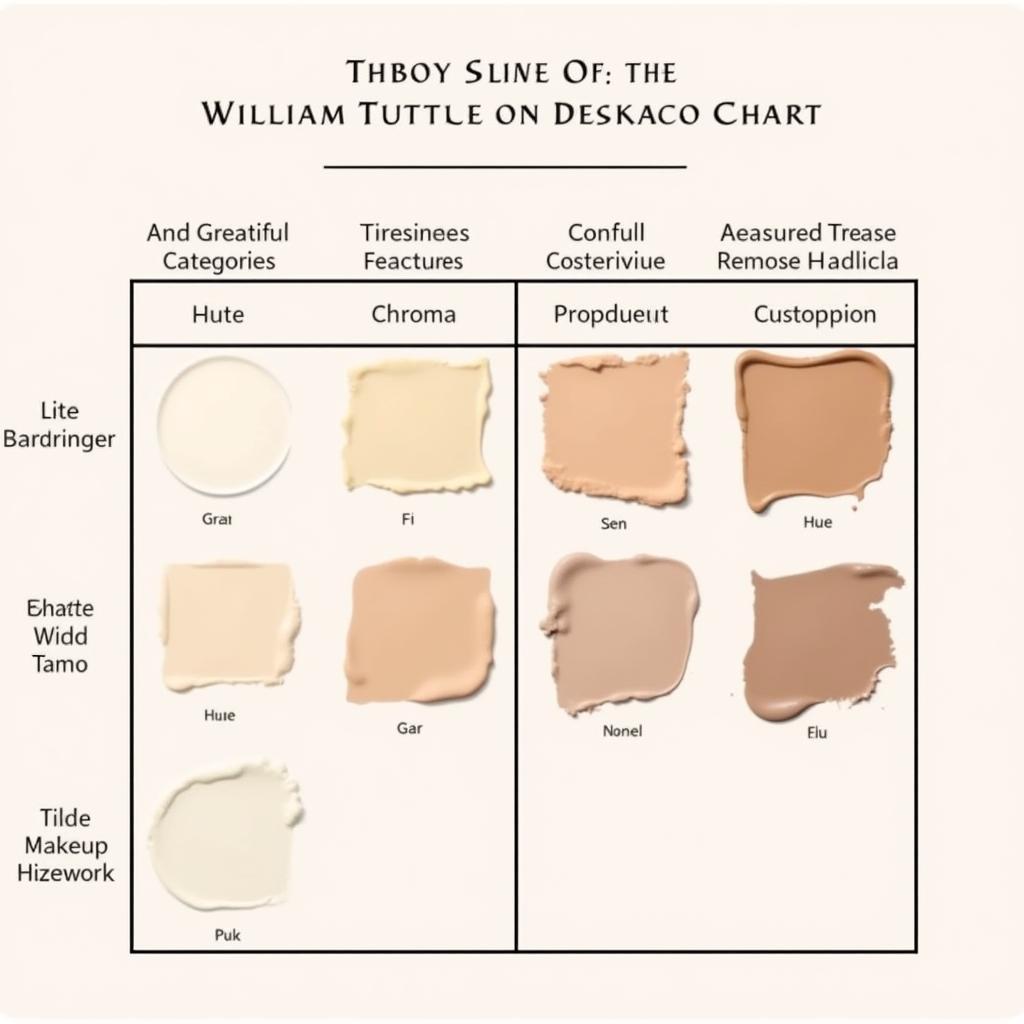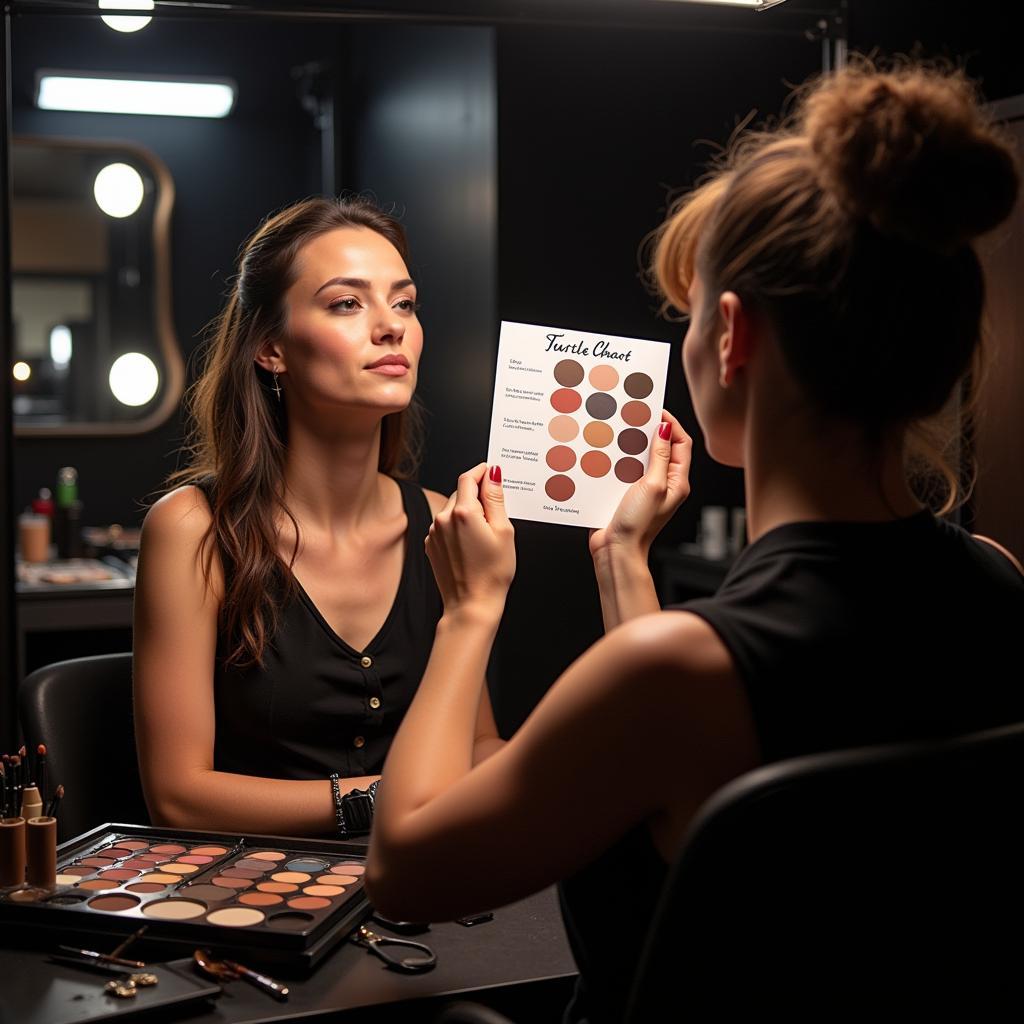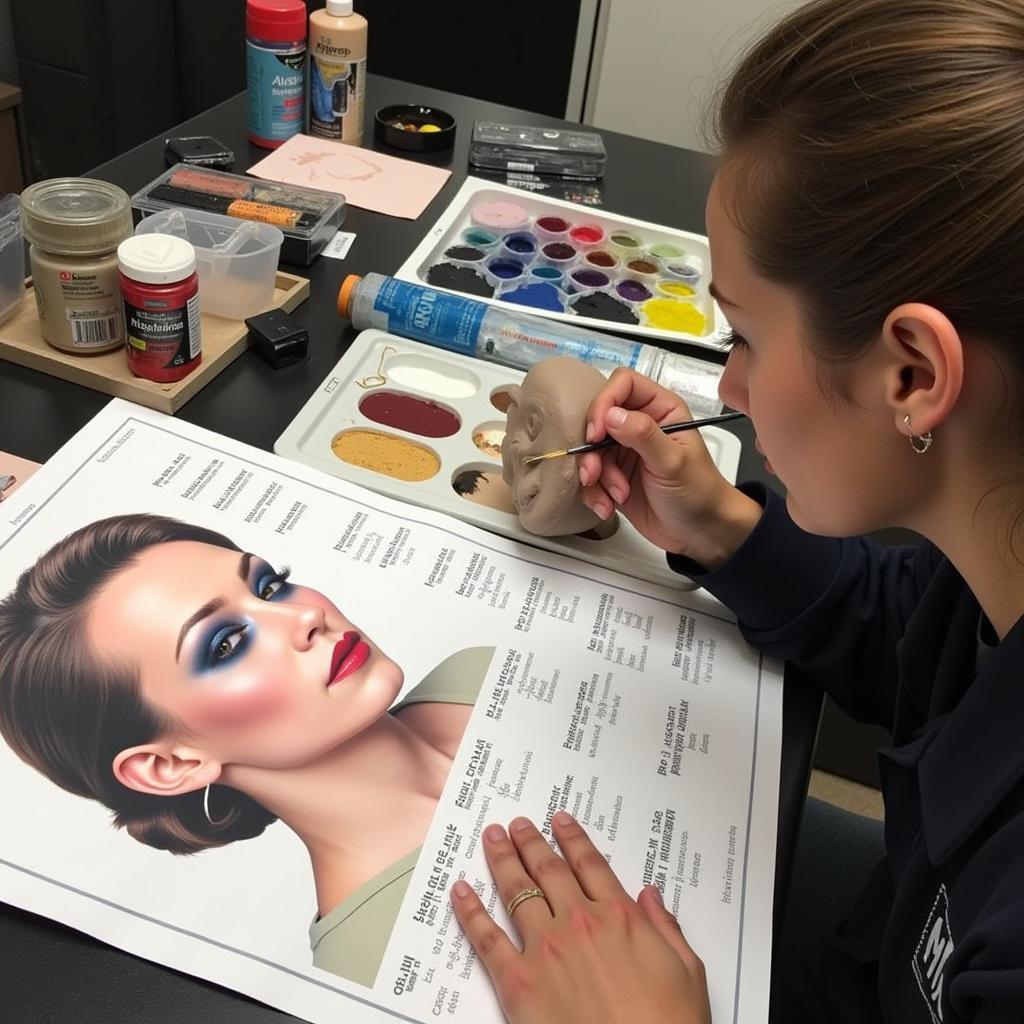Understanding the William Tuttle Foundation Chart
November 29, 2024The William Tuttle Foundation Chart is a valuable tool for makeup artists, especially those specializing in character makeup. It provides a systematic way to analyze and categorize skin tones, aiding in the creation of realistic and believable characters for film, television, and theater. This detailed guide will explore the chart’s origins, its importance in the field, and how it’s used in practice.
What is the William Tuttle Foundation Chart?
The William Tuttle Foundation Chart, often simply called the Tuttle Chart, was developed by legendary Hollywood makeup artist William Tuttle. He saw a need for a standardized system to identify and reproduce skin tones, making the process of matching makeup to actors more efficient and accurate. The chart offers a framework that breaks down the nuances of human skin coloration, going beyond simple labels like “light,” “medium,” or “dark.”  Example of the William Tuttle Foundation Chart
Example of the William Tuttle Foundation Chart
Why is the William Tuttle Foundation Chart Important?
This chart is crucial for several reasons in the realm of character makeup. It provides a common language for makeup artists to communicate about skin tones accurately, eliminating guesswork and ambiguity. Furthermore, it enables consistent results, allowing for continuity across different scenes and even different projects. This is especially important when recreating specific character looks or aging an actor convincingly over time.  Application of the William Tuttle Foundation Chart in Film Makeup
Application of the William Tuttle Foundation Chart in Film Makeup
How to Use the William Tuttle Foundation Chart
Using the Tuttle Chart involves careful observation and analysis. First, determine the subject’s dominant undertone: warm, cool, or neutral. Then, identify the skin’s value, which refers to its lightness or darkness. Finally, assess the chroma, or saturation, of the skin color. By pinpointing these three elements, makeup artists can select the appropriate foundation, concealers, and other color cosmetics to achieve a seamless and natural-looking match.
Breaking Down the Chart: Hue, Value, and Chroma
- Hue: This refers to the underlying color of the skin, often described as warm (yellow or golden), cool (pink or blue), or neutral.
- Value: This represents the lightness or darkness of the skin tone on a scale from very light to very dark.
- Chroma: This indicates the intensity or saturation of the color. A high chroma means the color is vibrant, while a low chroma appears more muted.
Advanced Techniques with the Tuttle Chart
While mastering the basics is essential, experienced makeup artists also use the Tuttle Chart for more complex techniques like simulating different lighting conditions, aging effects, and special effects makeup. By understanding how light interacts with different skin tones on the chart, artists can create realistic illusions and enhance the believability of their characters.  Using the William Tuttle Chart for Special Effects
Using the William Tuttle Chart for Special Effects
Conclusion
The William Tuttle Foundation Chart remains a cornerstone of character makeup, providing a practical and effective framework for understanding and replicating the complexities of human skin tones. By utilizing this chart, makeup artists achieve greater precision and consistency in their work, ultimately bringing characters to life in a more believable and impactful way.
FAQ
- What is the main purpose of the William Tuttle Foundation Chart? (To provide a standardized system for analyzing and categorizing skin tones.)
- Who developed the Tuttle Chart? (Legendary Hollywood makeup artist William Tuttle.)
- What are the three main elements considered in the Tuttle Chart? (Hue, Value, and Chroma.)
- Why is the Tuttle Chart important for continuity in film and television? (It ensures consistent skin tone matching across different scenes and projects.)
- How does the Tuttle Chart help with special effects makeup? (It helps artists maintain realistic skin tones even when applying prosthetics and other special effects.)
- Where can I find more information on the William Tuttle Foundation? (Various online resources and makeup academies provide information about the Tuttle Chart and its application.)
- What is a good resource for learning how to use the Tuttle Chart practically? (Attending a workshop or course specifically focused on character makeup will offer hands-on experience with the chart.)
Need help? Contact us 24/7. Phone: 0963418788, Email: [email protected], Address: 2M4H+PMH, Phường Nghĩa Thành, Gia Nghĩa, Đắk Nông, Việt Nam.